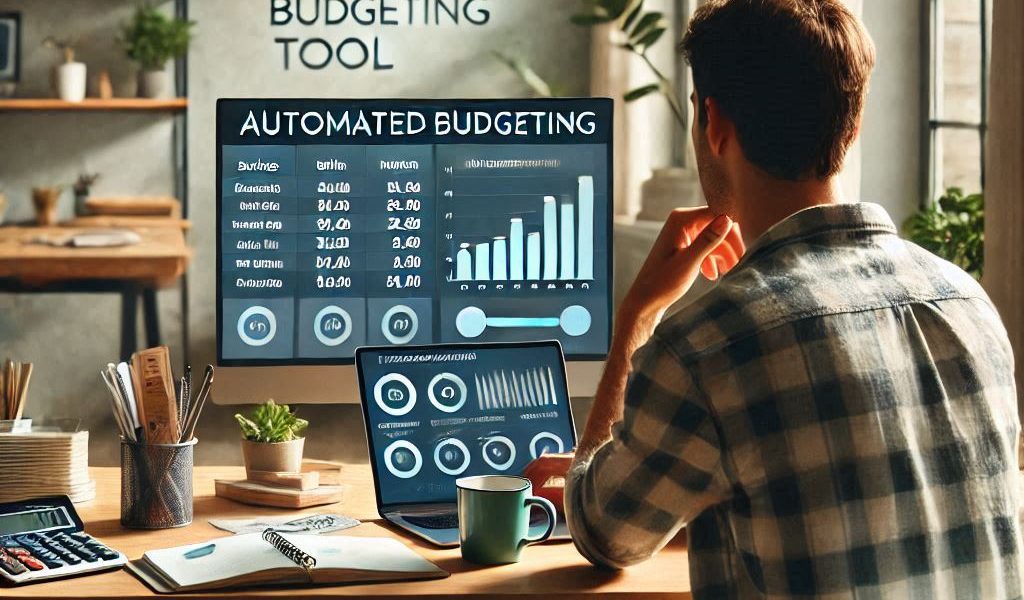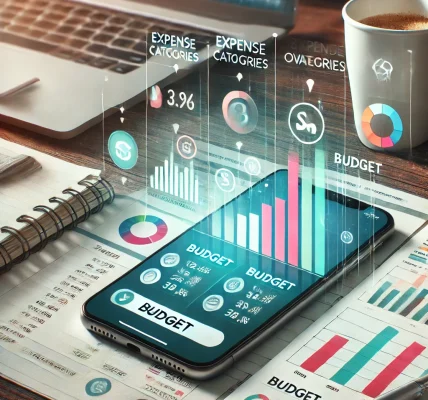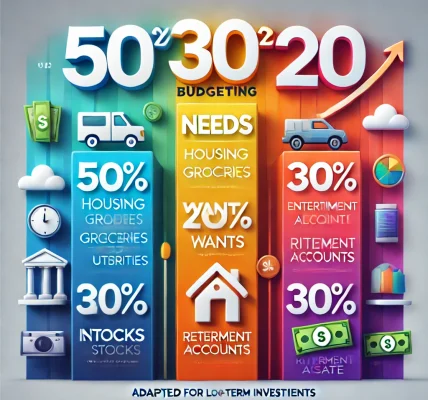Budgeting is essential for managing your finances, but let’s face it—tracking every expense, making adjustments, and staying on top of bills can be time-consuming and tedious. The good news is that modern technology has made budgeting simpler than ever. One of the most powerful tools to simplify your financial management is automation. By embracing automation, you can streamline your budgeting process, save time, and ensure that your finances stay on track without the stress.
In this blog, we’ll explore the role of automation in budgeting, its benefits, and practical ways you can incorporate it into your own financial routine.
What is Budgeting Automation?
Budgeting automation involves using technology and software tools to automatically track, categorize, and manage your financial transactions. Instead of manually recording every expense or transferring money between accounts, automation handles repetitive tasks for you. This can include:
- Tracking expenses: Automatically categorizing your spending and providing insights into where your money is going.
- Bill payments: Setting up automatic payments for recurring bills (like rent, utilities, subscriptions) to avoid late fees.
- Savings and investments: Automatically transferring a set amount of money into savings or investment accounts at regular intervals.
Automation makes it easier to stick to your financial goals and ensures that important tasks aren’t overlooked.
Why Automation is a Game Changer for Budgeting
1. Time-Saving
One of the biggest benefits of automation is the time it saves. Manually recording every transaction, updating your budget, and remembering to pay bills on time can take hours each month. With automated tools, most of these tasks are done for you in the background. All you have to do is review and adjust when necessary. This frees up time to focus on other financial goals or personal pursuits.
2. Reduces Human Error
Human error is a common issue when managing finances manually. Whether it’s forgetting to log an expense or miscalculating your budget, mistakes can happen. Automation significantly reduces this risk by automatically categorizing and tracking your transactions, leaving little room for error. This ensures more accurate budgeting, making it easier to track progress and make informed decisions.
3. Consistency and Discipline
Staying disciplined with budgeting is one of the biggest challenges. However, automated budgeting tools enforce consistency by automatically tracking your expenses and transferring funds as needed. This can be especially useful when saving for a specific goal, as the automation keeps you on track without the temptation to dip into your savings or skip a month.
4. Helps Avoid Late Fees and Penalties
Late payments on bills can result in fees and damage your credit score. Automated bill payments ensure that you never miss a payment, keeping your financial reputation intact. By scheduling payments to be made automatically on their due dates, you can ensure that your bills are paid on time, every time.
How Automation Simplifies Your Budgeting Process
1. Automating Expense Tracking
Expense tracking is the backbone of any successful budget. Rather than manually entering every expense, you can use budgeting apps or financial software that automatically links to your bank accounts and credit cards. These tools will categorize your expenses (e.g., groceries, dining out, entertainment) and generate reports to show you where your money is going. Popular apps like Mint, YNAB (You Need a Budget), and Personal Capital allow you to sync all your financial accounts in one place, giving you a clear view of your spending habits.
2. Automatic Bill Payments
Automating your bill payments is one of the easiest ways to stay on top of your budget. Many utility companies, subscription services, and credit card companies allow you to set up automatic payments. This eliminates the risk of missing a payment, which can result in late fees or service interruptions. Not only does this save you time, but it also helps improve your credit score, as timely payments contribute to a positive credit history.
3. Automating Savings and Investments
Building an emergency fund or saving for a specific goal can be challenging without consistency. Automation makes saving effortless by setting up recurring transfers to your savings or investment accounts. Whether you’re contributing to an emergency fund, retirement savings, or a down payment for a house, automating these transfers ensures that you consistently put money aside without thinking about it.
For example, you can set up a system where 10% of your paycheck is automatically transferred to your savings account each payday. This “pay yourself first” approach helps you stay disciplined and reach your financial goals faster.
4. Investment Contributions
In addition to savings, automation can also be used for investment contributions. Many investment platforms allow you to set up recurring investments in stocks, bonds, or mutual funds. By automating your investments, you can take advantage of dollar-cost averaging, which helps smooth out the impact of market volatility. Over time, regular contributions can lead to significant growth in your portfolio, especially when combined with compound interest.
How to Get Started with Budgeting Automation
1. Choose the Right Tools
There are many apps and tools available to help you automate your budget. Some popular options include:
- Mint: Automatically tracks all your transactions, categorizes them, and creates a budget based on your spending habits.
- YNAB (You Need A Budget): Offers budgeting tools that help you plan and prioritize your spending while automating savings goals.
- Personal Capital: Helps you track both your spending and investments in one place.
- Simplifi by Quicken: Automatically tracks expenses and offers customizable reports and insights.
Select a tool that fits your needs and integrates well with your bank and other financial accounts.
2. Set Up Recurring Payments and Transfers
Once you’ve chosen your tools, set up recurring payments for bills, subscriptions, and transfers to savings and investment accounts. For example, automate your rent or mortgage payments, utility bills, and subscription services (like Netflix or Spotify). Also, set up automatic transfers from your checking account to your savings or investment accounts on a regular schedule.
3. Monitor and Adjust Regularly
While automation does the heavy lifting, it’s still important to review your budget periodically. Make sure that your automated expenses are still in line with your goals, and adjust your savings targets or spending categories as needed. Reviewing your budget at least once a month will ensure that everything stays on track.
Final Thoughts
Automation has revolutionized how we manage our finances. By using automated tools, you can save time, reduce errors, and ensure that your financial goals are always on track. Whether it’s automating bill payments, tracking expenses, or contributing to savings and investments, embracing automation is a powerful way to simplify budgeting and take control of your financial future.



